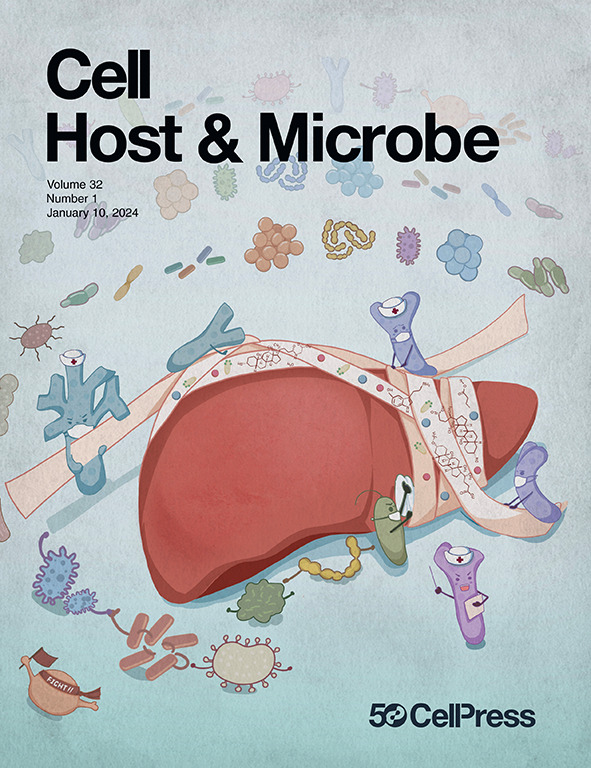An engineered gut bacterium protects against dietary methylmercury exposure in pregnant mice
IF 20.6
1区 医学
Q1 MICROBIOLOGY
引用次数: 0
Abstract
Despite efforts to decrease mercury emissions, chronic exposure to the neurotoxicant methylmercury (MeHg) continues to be a global problem that contributes to disparities in risk for neurological and metabolic diseases. Herein we engineer a human commensal gut bacterium, Bacteroides thetaiotaomicron (Bt), to detoxify MeHg by heterologous expression of organomercury lyase (MerB) and mercuric reductase (MerA) genes derived from a resistant bacterium isolated from Hg-polluted mines. We demonstrate that BtmerA/B demethylates MeHg both in vitro and within the intestines of mice orally exposed to MeHg or diets containing MeHg-rich fish. In pregnant mice exposed to dietary MeHg, BtmerA/B decreases MeHg accumulation in the maternal liver, brain, placenta, and fetal brain, and attenuates the expression of cellular stress genes in the fetal brain. Overall, this work provides foundational proof-of-principle supporting the ability of an engineered gut bacterium to limit MeHg bioaccumulation and reduce adverse effects of chronic MeHg exposure.

一种工程肠道细菌保护怀孕小鼠免受饮食甲基汞暴露
尽管努力减少汞排放,但长期接触神经毒物甲基汞(MeHg)仍然是一个全球性问题,造成了神经和代谢疾病风险的差异。在此,我们设计了一种人类共生肠道细菌,拟杆菌(Bacteroides thetaiotaomicron, Bt),通过异源表达有机汞裂解酶(MerB)和汞还原酶(MerA)基因来解毒甲基汞,这些基因来自一种从汞污染矿井中分离出来的耐药细菌。我们证明了BtmerA/B在体外和小鼠肠道内口服暴露于甲基汞或含有富含甲基汞的鱼的饮食中都能使甲基汞去甲基化。在饮食中暴露MeHg的妊娠小鼠中,BtmerA/B可减少母体肝脏、脑、胎盘和胎儿脑中MeHg的积累,并减弱胎儿脑中细胞应激基因的表达。总的来说,这项工作提供了基础的原理证明,支持工程肠道细菌限制甲基汞生物积累和减少慢性甲基汞暴露的不良影响的能力。
本文章由计算机程序翻译,如有差异,请以英文原文为准。
求助全文
约1分钟内获得全文
求助全文
来源期刊

Cell host & microbe
生物-微生物学
CiteScore
45.10
自引率
1.70%
发文量
201
审稿时长
4-8 weeks
期刊介绍:
Cell Host & Microbe is a scientific journal that was launched in March 2007. The journal aims to provide a platform for scientists to exchange ideas and concepts related to the study of microbes and their interaction with host organisms at a molecular, cellular, and immune level. It publishes novel findings on a wide range of microorganisms including bacteria, fungi, parasites, and viruses. The journal focuses on the interface between the microbe and its host, whether the host is a vertebrate, invertebrate, or plant, and whether the microbe is pathogenic, non-pathogenic, or commensal. The integrated study of microbes and their interactions with each other, their host, and the cellular environment they inhabit is a unifying theme of the journal. The published work in Cell Host & Microbe is expected to be of exceptional significance within its field and also of interest to researchers in other areas. In addition to primary research articles, the journal features expert analysis, commentary, and reviews on current topics of interest in the field.
 求助内容:
求助内容: 应助结果提醒方式:
应助结果提醒方式:


